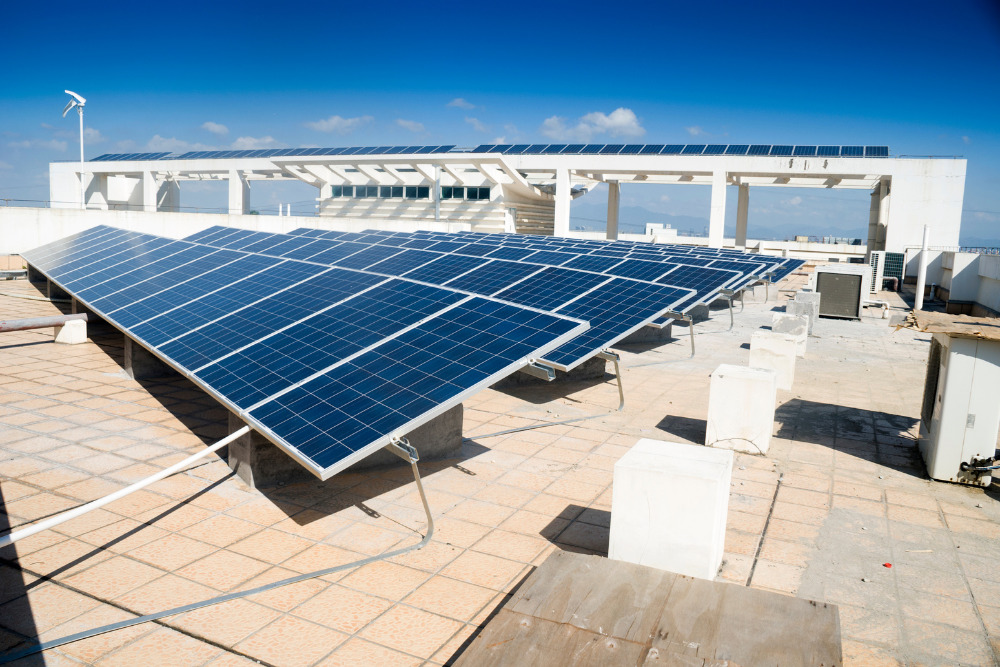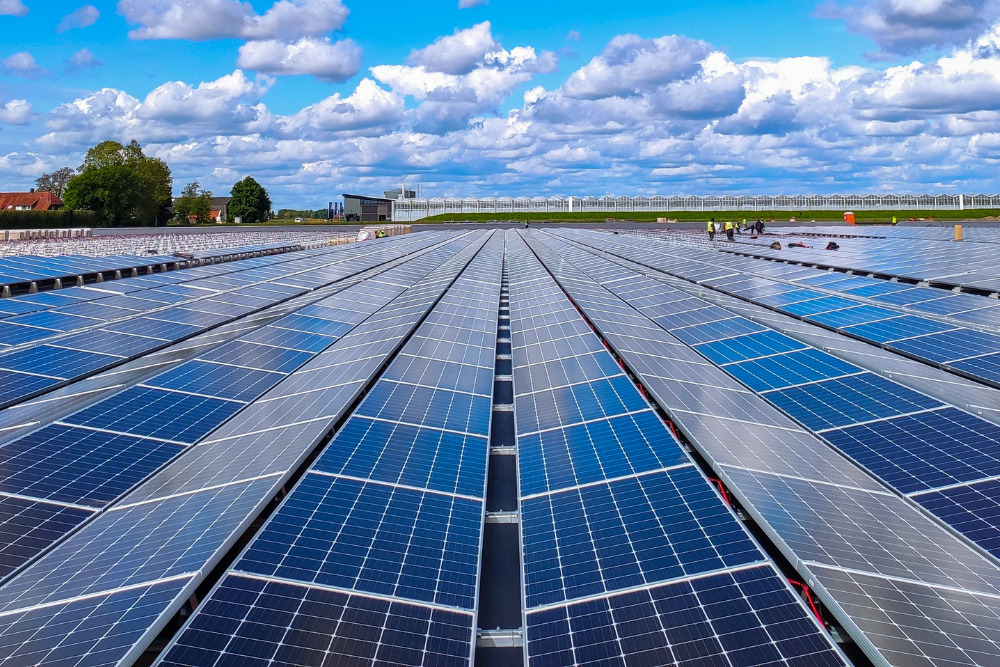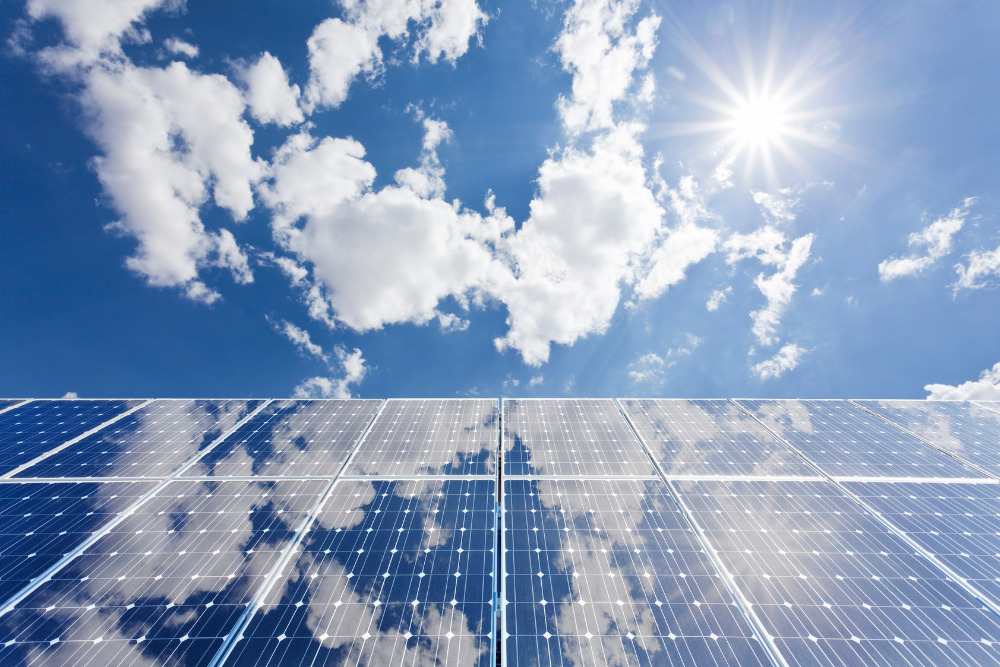
The average cost of a commercial solar panel system is around $2-$4 per watt. The cost of commercial solar panels depends on the type of panels used, the system size, and the business location. A 100 kW system costs between $200,000-$400,000.
Commercial solar power systems (photovoltaic systems) have gained popularity as businesses increasingly seek sustainable and cost-effective energy solutions. Learn what factors affect the cost of commercial solar panels if your company is considering implementing solar energy to reduce electricity costs.
What’s The Average Cost Of A Commercial Solar Panel System?
Just as with residential solar panels, the cost of a commercial solar project will depend on several factors.
System Size
The average cost of commercial solar panel installation varies based on its size, with larger systems being more expensive. A small-scale system with a capacity of around 10 kW may cost between $20,000 and $40,000, while larger systems of 100 kW or more range from $200,000 to $400,000 or higher.
Type Of Equipment
The choice of equipment, including the type and brand of solar panels, inverters, mounting systems, and optional solar batteries affects the cost of a commercial solar panel system. Higher-quality equipment often comes with a higher price tag but offers better performance, durability, and warranties, which may justify the additional investment.
Monocrystalline and PERC solar panels are the most expensive, while the cost (and efficiency) decreases with the use of polycrystalline solar panels.
Energy Usage
A business's energy usage plays a significant role in determining the cost of a commercial solar panel system. Companies with higher energy demands will require larger systems to meet their electricity needs.
Incentives
Various financial incentives, such as federal tax credits, state grants, and utility rebates, reduce the cost of a commercial solar panel system. These tax incentives promote the adoption of renewable energy and make it more financially viable for businesses.
Depending on the location and specific incentives available, businesses can save 30% or more on the total cost of their solar panel system.
Net Metering
Net metering policies allow businesses to sell excess electricity generated by their solar panel system back to the grid, offsetting their energy bills. With net metering, companies receive credits for their surplus electricity, reducing their energy costs even further.
This effectively lowers the net cost of the commercial solar panel system over time, shortening a business’s payback period and helping them reach their ROI faster.

How Long Does It Take For A Commercial Solar System To Pay For Itself?
The payback period for a commercial solar system depends on various factors, including the initial cost, energy savings, incentives, and financing terms. On average, commercial solar systems have a payback period of around 5-10 years.
However, with favorable conditions, such as high energy productions, incentives, net metering, and favorable financing options, some businesses may achieve payback in as little as 3-4 years.
How To Pay For Commercial Solar
Business owners have several options to consider when paying for commercial solar systems.
One option is to secure a solar loan, allowing businesses to finance the system upfront and pay it off over time.
Another is a solar lease or a power purchase agreement (PPA), where the business leases the solar system or purchases the generated electricity at a predetermined rate.
Government incentives, like grants, rebates, and solar investment tax credits (ITC), significantly reduce the financial burden of installing a commercial solar system. These incentives provide financial assistance, offset upfront costs, or provide ongoing economic benefits.
Additionally, some businesses may choose to allocate a portion of the cost from their marketing budget, especially if they use custom-designed SolarSkin overlays as part of a branding strategy. By incorporating solar panels into their marketing efforts, businesses leverage the positive environmental image of renewable energy and justify the system cost as a marketing expense.
How Much Energy Does A Commercial Solar Panel Produce?
The amount of energy a commercial solar panel produces depends on factors like panel efficiency, system size, and business location. A commercial solar panel system produces between 1,000 and 1,300 kilowatt-hours (kWh) of electricity per year per installed kilowatt (kW) capacity.
Is It Possible For A Business To Be Energy Independent With Solar Alone?
While it is possible for a business to become energy independent with solar, achieving complete energy independence typically requires careful planning and consideration.
Companies must install a solar panel system that generates enough electricity to meet their energy needs throughout the year for energy independence. For large businesses, like warehouses and factories, this could mean solar arrays with hundreds of panels (or even thousands, like some Amazon warehouses).
Businesses can also incorporate energy storage solutions like solar batteries to store excess solar energy when the sun isn't shining. Energy-efficient practices, energy monitoring systems, and load management strategies also allow businesses to optimize their energy consumption and enhance energy independence.
In general, it’s easier and more affordable for small businesses to achieve energy independence through solar, but large commercial buildings with the space and budget can effectively cut ties with their local utility company with careful planning.

What Are The Pros And Cons Of A Commercial Solar Energy System?
Pros Of Commercial Solar Power
- Integrating solar panels into a business's branding strategy enhances its reputation. Demonstrating a commitment to sustainability and clean energy attracts environmentally conscious customers and stakeholders, giving companies a competitive edge.
- Commercial solar systems significantly reduce or even eliminate electricity bills, leading to long-term cost savings. By generating renewable energy, businesses protect themselves from rising utility rates and achieve predictable energy costs.
- Adopting commercial solar helps businesses reduce their carbon footprint and contribute to sustainability goals. Solar energy is clean and renewable, produces fewer greenhouse gas emissions, and is therefore environmentally friendly.
- Commercial solar systems offer a strong return on investment over the system's lifespan. The initial investment is recouped through energy savings, government incentives, and potential revenue from selling excess electricity back to the grid. Depending on a business’s tax bracket, it could recover approximately 12%-25% of the original system price through depreciation.
Cons Of Commercial Solar
- Solar energy generation depends on sunlight availability, which is affected by weather conditions and daily or seasonal variations. This intermittent nature of solar energy means that businesses may still rely on the grid during periods of low solar output, potentially limiting complete energy independence.
- While solar panels have a long lifespan, regular maintenance, and monitoring are necessary to ensure optimal performance. This includes cleaning panels, checking connections, and replacing components as needed. Maintenance costs and the need for occasional repairs or replacements should be considered when evaluating the overall financial feasibility of a commercial solar system.
- Commercial solar installations typically require a significant amount of roof space. Not all businesses have sufficient space or structurally suitable surfaces to accommodate solar panels. Of course, there are ways to get creative with a solar installation, such as by installing a solar canopy over a parking lot or opting for a ground-mounted system if there is enough usable space. Depending on a building’s height and orientation, solar panels can even be installed on the building facade.
- An obstacle to commercial solar is the initial investment required. The upfront purchasing and installation costs are substantial, especially for larger systems, which may pose a financial barrier for some businesses.


